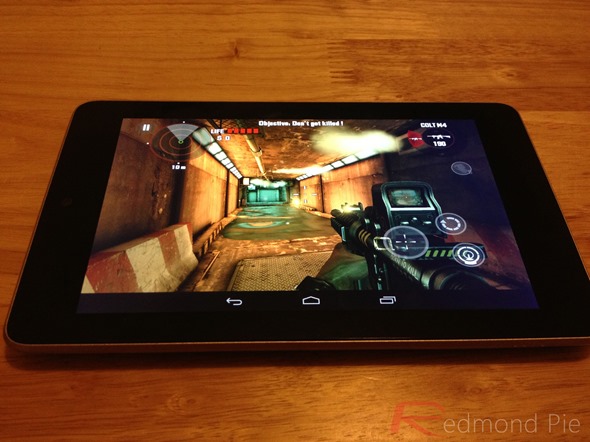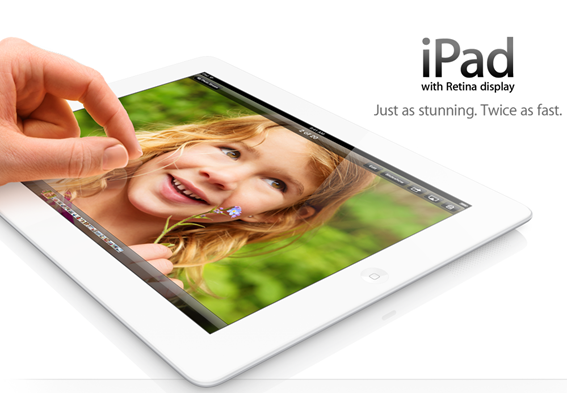Although not all of this Fall’s tablet releases have arrived just yet, there’s already enough on the table for consumers to begin making some big decisions. The iPad 4 and iPad mini, which were announced earlier this week, were closely followed by the Surface RT from Microsoft, and of all the Android tablets currently available, the Nexus 7 is unarguably the most popular. With that in mind, we’ll be advising you on which of the above four devices you should consider, depending on your requirements and budget.
Nexus 7
Working chronologically, we’ll start with the Nexus 7. The brainchild of a collaborative effort between ASUS and Google, the Nexus 7 initially gathered momentum thanks to its low price point. The attention of the masses was well and truly caught with the sub-$200 cost, but its longevity in the market truly attests to the quality of the 7-inch slab once unboxed.
Packing in a quad-core processor, it’s more than just a budget tablet, and with an equally-impressive high-res display, it’s ideal for those wishing to play casual games on a frequent basis. If you’re a big app user, the Nexus 7 is a very slick customer, running on the decidedly "buttery" Android 4.1.
Pros: Gorgeous HD display, seamless operation, perfect size for one-handed use. It’s one of the best Android experiences you can currently find – tablet or otherwise.
Cons: No cellular option (although expected very soon), and lack of rear-facing camera is somewhat disappointing. Build quality is also rather questionable.

iPad mini
Apple has an uncanny knack for finding itself in the news, whether it’s for a good reason or a negative one, and the iPad mini is certainly not been hiding away from those column inches since launching earlier this week.
Much has been made about the smaller tablet during the last couple of months, but the general consensus seems now to be one of disappointment – not only with regards to the price, but the features (or indeed, lack thereof).
There’s no doubt it – like many an Apple product – looks the part. The thinner vertical bezel gives it a feel of an iPod touch, but the larger display – which maintains a resolution identical to the iPad 2, really ought to have been Retina for the $329 minimum asking price.
One of the key appeals of the new wave of 7-inch tablets has always been the price tag, but Apple seems to have missed this part of the deal and as such, released a product which simply doesn’t appeal as much as it should.
Still, on a positive note, it does include a dual-core A5 processor, and with 16 GB of space as standard, will pack in quite a few apps and games.
Pros: It’s cheaper than a 9.7-inch iPad, 4G available, reasonably powerful, aesthetically pleasing.
Cons: 4th-gen iPad can be had for $170 more, costs too much, is essentially a downsized iPad 2. Lack of Retina display leaves display looking lackluster.

iPad 4
Apple surprised everybody by dropping the 4th-gen iPad so soon after the iPad 3, but although many owners of the 7-month iPad have every right to feel a little hard done-by, the fourth-gen iPad is actually a premature upgrade on the best tablet available.
Partisan Windows and Android fans may disagree, but the iPad is still top dog when it comes to the tablet market, and I’m not just talking about sales figures. The inclusion of the Lightning cable is neither here nor there in the grand scheme of things, but the A6X processor – double the speed of the A5X of the iPad 3 – sets the Cupertino’s flagship slate apart from the rest of the field.
An 8-megapixel camera would have been the icing on the cake, really, but with the Retina display, rapid processor / GPU, and the option of Wi-Fi / 3G / 4G, it’s a great all-rounder.
Pros: Beautiful Retina display, A6X processor, very fast. Still be best in the game.
Cons: It’s weighty versus most rivals, it’s also very expensive compared to essentially any other tablet. It’s also quite rotund, and cannot be squirrelled away in the pocket like the iPad mini or Nexus 7.

Surface RT
Microsoft has arrived fashionably late, but the Surface RT is the breath of fresh air needed to shake up the tablet market. We’ve seen Android vendors churn out many an underwhelming iPad re-hash, but the Surface takes a different approach – painting itself as a hybrid device doubling up as an ultrabook.
When the Touch / Type Cover is applied, they can be utilized as a keyboard, and the kickstand of the Surface can be flicked out to keep the device standing upright, as per an open ultrabook.
It features many unique features, such as an SDXC slot allowing you to slip an additional 64GB of storage, and a full USB 2.0 and HD video port. Powered by NVIDIA’s Tegra 3 processor and 2GB of RAM, it certainly isn’t underpowered, and running the specially-adapted Windows 8 RT, it’s ideal for those looking to get a taste of Microsoft’s latest operating system.
Pros: Large display, hybrid capabilities are a major pull-factor. Runs Windows 8 RT, and can – at a push – replace your notebook and tablet in one fell swoop.
Cons: Touch / Type Covers Cost $100+, the necessity of a full-size USB port questionable, may not be up to required standards for business users.

The Verdict
Having used a Nexus 7 for a prolonged amount of time, I have been really impressed by its capabilities, especially considering its price and physical size. It doesn’t feel as sturdy as your iPad, and doesn’t quite offer the standard of build as its Cupertino rival, but if you want value for money and aren’t too fussed about taking photos, you should seriously considering picking one up.
The iPad mini is, by all accounts, a bit of a rip-off, and although it will likely sell in the tens of millions, I’m really struggling to see its value. If you want a smaller tablet, I’d suggest you go for the Nexus 7. After all, it’s said to be getting cellular / 32GB storage options very soon, and aside from the rear-facing camera, you’re not getting much more by purchasing a mini.
Of the larger tablets, it’s really down to personal preference. Both the iPad 4 and Surface are very capable devices, but differ considerably in many key areas. If you’re looking for something to utilize as a notebook and a tablet, the Surface RT should be your chosen slate, but if you’re looking for an out-and-out tablet, the iPad 4 is, as mentioned earlier, the very best available on the market.
You can follow us on Twitter, add us to your circle on Google+ or like our Facebook page to keep yourself updated on all the latest from Microsoft, Google, Apple and the web.

